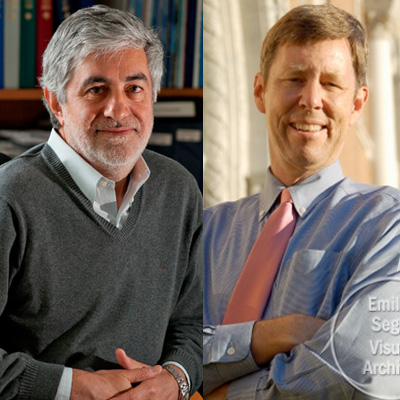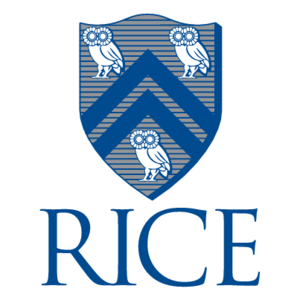Theory and experimentation combine to solve the Hubbard Problem
Eighty-five years after the formulation of Schrodinger's equation, computational quantum mechanics is a very successful field. A myriad of approximations exist that at reasonably low computational cost can get the “right answer for the right reason” for most molecules and materials. However, there is a dark secret to this success story: these methods break down for the strongly correlated electrons found in high-temperature superconducting materials. Higher temperatuer superconductors are central to the development of disruptive technologies for transmitting electricity without heat losses. A predictive quantum model is still lacking and is in fact deemed impossible by many. Dr. Gustavo Scuseria and Dr. Randy Hulet, of Rice University, are developing methods for computing and experimentally simulating solutions to the correlation problem as expressed in the Hubbard model--the primary model used to explain superconductivity. The convergence of radically new theoretical and experimental approaches presents a unique opportunity for advancing our understanding of strongly correlated matter.
In a recent breakthrough, Scuseria has proven that a simplified version of the very successful coupled cluster method of quantum chemistry can accurately model the near degeneracies and long-range character of strong correlation. This new theory paired with Dr. Scuseria’s demonstration of an accurate and affordable description of extended systems has offered new and encouraging results. Meanwhile, Dr. Hulet has developed a new scheme to cool atoms to temperatures of a few nano-Kelvin on an “optical lattice” made from laser beams. Hulet uses atoms confined to an optical lattice to simulate the behavior of electrons in the crystal lattice of a superconducting material. Dr. Hulet’s experiments will add a synergistic feedback loop to Dr. Suseria’s theory, to validate their accuary. This promising convergence is exceptional and had remained unrealizable until the two groups devised these unique methodologies.
Current research includes:
-
Understanding Materials: Superconductors revolutionized physics and have the potential to revolutionize technology. If researchers could devise a superconductor that operated at room temperature, they could transport electricity without any loss. After thirty years of intense effort however, researchers still do not know how high temperature superconductors work. Dr. Scuseria and Dr. Hulet are working to understand superconductors better to try to use that understanding to devise novel materials with exceptional properties.
- Solving the Hubbard Problem: Dr. Scuseria uses special theoretical tools that he is applying to the Hubbard model which is the primary model to explain superconductivity. Using experimental techniques, Dr. Hulet is simulating the Hubbard model and instead of a digital computer, using the lithium atoms contained in the lattice as an analog quantum computer to solve the problem.
Bio
Randall Hulet is well known for his many important contributions to atomic physics. He played a leading role in the development of laser cooling and laser trapping of atoms. His most important achievements are the first realization of Bose-Einstein condensation in an atomic gas with attractive interactions, the creation of a degenerate Bose-Fermi mixture, and the observation of antiferromagnetic order in the Fermi-Hubbard model using ultracold atoms.
Professor Hulet was inspired by his father who was an experimental nuclear chemist. As a child, he would spend time with his father at his lab at the Lawrence Berkeley Laboratory, marveling that one could make a career tinkering in the laboratory.
Randy Hulet Website: http://atomcool.rice.edu
Professor Scuseria’s main research field is computational quantum chemistry, an area where he has made seminal contributions to the development of new methodologies and their application to molecules, solids, and nanoscale systems. Scuseria is also well known for his contributions to the Gaussian suite of programs, a popular software package for quantum chemistry calculations used in academia, government, and industry. He is the author of more than 450 publications that have received more than 40,000 citations according to Thomson Reuters Web of Science. Scuseria has presented more than 350 invited lectures at national and international conferences, academic and research institutions. Dr. Scuseria was very good at math as a child and had excellent teachers that were always challenging him. As a young five-year-old, he declared to his parents that he wanted to be a scientist. Therefore, he finished his B.S, M.S., and Ph.D. in his home country of Argentina and then completed his postdoctoral internship in the United States where he has since continued his professional career.


